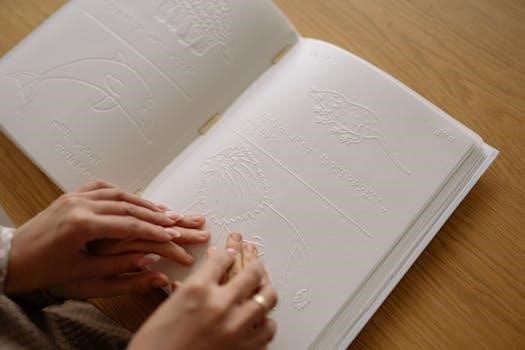Ariadne in Greek Mythology⁚ An Overview
Ariadne, a Cretan princess, plays a pivotal role in Greek mythology, primarily known for her assistance in guiding Theseus through the labyrinth. Her guidance allowed him to defeat the Minotaur and escape, forever intertwining her name with his legend.
Ariadne’s Role and Significance
Ariadne’s role extends beyond simply aiding Theseus; she represents guidance, love, and ultimately, betrayal within the complex tapestry of Greek myths. Her provision of the thread symbolizes her active participation and crucial insight in navigating treacherous situations. Without Ariadne’s guidance, Theseus would have been lost, highlighting her significance. This act is fundamental to understanding her character as a guiding force, shaping the narrative’s outcome and influencing interpretations of her legacy.
The Myth of Ariadne and Theseus
The myth of Ariadne and Theseus centers around Ariadne’s crucial guidance. Her thread enabled Theseus to navigate the labyrinth, defeat the Minotaur, and escape, highlighting her integral role in his success and survival.
Ariadne’s Assistance to Theseus
Ariadne’s assistance to Theseus was pivotal, primarily through providing him with a thread. Guided by love, she offered this crucial tool, allowing him to navigate the labyrinth constructed by Daedalus. This thread served as a lifeline, ensuring Theseus could successfully confront and slay the Minotaur, her half-brother, before escaping the maze’s depths and the wrath of King Minos, her father.
The Labyrinth and the Thread
The labyrinth, a complex maze beneath King Minos’s palace, held the monstrous Minotaur. Ariadne’s thread was crucial for Theseus to navigate this intricate structure. She gave him a ball of thread, guiding his path as he ventured in. Unwinding it, he marked his journey, ensuring his safe return after confronting the beast, making the thread synonymous with guidance and escape.
Theseus’ Betrayal and Abandonment of Ariadne
Despite Ariadne’s crucial guidance in helping Theseus escape the labyrinth, he betrayed her. After fleeing Crete, Theseus abandoned Ariadne on the island of Naxos. This act of betrayal left her heartbroken and alone. The reasons for his abandonment vary in different accounts, ranging from forgetfulness to the influence of the gods, marking a tragic turn in her story.

Ariadne and Dionysus
Following her abandonment, Ariadne’s fate takes a turn when she encounters Dionysus. He offers her solace and love, guiding her towards a new destiny as his bride, elevating her from mortal sorrow to divine companionship.
Ariadne as the Bride of Dionysus
Ariadne’s role shifts dramatically as she becomes the bride of Dionysus, the god of wine and revelry. This union signifies a transition from mortal struggles to divine bliss. Dionysus essentially guides her towards immortality and a life filled with joy, festivals, and eternal love. Their marriage symbolizes a powerful bond, offering Ariadne a place among the gods, a stark contrast to her earlier abandonment and despair.
The Union of Ariadne and Dionysus
The union of Ariadne and Dionysus represents a transformative journey for Ariadne, guided by divine love and acceptance. Dionysus rescues her from isolation, offering her a crown of stars and eternal companionship. This marriage signifies a merging of mortal experience with divine power, granting Ariadne a new identity as a goddess. Their relationship highlights themes of redemption, love, and the potential for transformation through divine guidance.
Symbolism of Ariadne
Ariadne’s symbolism revolves around guidance, escape, and betrayal. Her thread represents the power of knowledge and assistance in navigating life’s complexities. She embodies love, loss, and ultimately, the potential for renewed purpose and divine connection.
Ariadne’s Thread⁚ Guidance and Escape
Ariadne’s thread is a powerful symbol of guidance, hope, and the means of escape from seemingly insurmountable challenges. In the labyrinth, it provided Theseus with the necessary direction to navigate the darkness and defeat the Minotaur. The thread represents the binding element of stories, acting as a crucial link and essential guide, ensuring safe passage and return from perilous journeys. It signifies problem-solving, offering direction when one is lost.
Ariadne as a Symbol of Love and Betrayal
Ariadne embodies both profound love and devastating betrayal within Greek mythology. Her deep affection for Theseus motivated her to guide him, providing the means for his survival and triumph. However, this act of love was met with abandonment, leaving her as a symbol of heartbreak. She represents the vulnerability of love and the potential for betrayal, highlighting the pain of unreciprocated devotion and the complexities of human relationships within the myths.
Ariadne in Art and Literature
Ariadne’s story, especially her role in guiding Theseus, has inspired countless artistic and literary interpretations. From ancient depictions to modern retellings, her character embodies love, betrayal, and the power of female agency.
Ancient Depictions of Ariadne
Ancient art frequently portrays Ariadne offering the thread, her most recognizable attribute, visually emphasizing her role in guiding Theseus. These depictions, found on pottery, frescoes, and gems, highlight her agency in the Minotaur’s defeat. Artists often focused on the moment of connection, emphasizing Ariadne’s unwavering gaze as she entrusted the thread to Theseus, knowing it would guide him through the labyrinth’s darkness and towards freedom, even if it meant her own heartbreak later. The guiding thread became a visual metaphor for her assistance.
Modern Retellings of the Ariadne Myth
Modern interpretations of Ariadne often re-imagine her agency, portraying her as a powerful figure who actively guides her own destiny. Contemporary novels and poems explore her perspective, highlighting her intelligence and courage in challenging patriarchal norms. Instead of a passive helper, she becomes a strategist, using her knowledge and influence to guide events. Authors delve into her motivations, showcasing the complexity of her choices and her ultimate pursuit of freedom, even after Theseus’s betrayal. They examine how she guides herself towards her new life.

Pronunciation of Ariadne
The pronunciation of “Ariadne” can vary, but in American English, it is commonly pronounced as /ˌæriˈædni/. While pronunciation doesn’t directly relate to guiding, understanding it helps navigate discussions about this guiding figure in mythology.
Common Pronunciation in American English
In American English, the name Ariadne is generally pronounced as /ˌæriˈædni/. This pronunciation emphasizes the “AH-ree-AD-nee” sound, with a slight stress on the second syllable. Understanding the common pronunciation aids in clear communication when discussing Ariadne, especially concerning her role in guiding Theseus through the Labyrinth. Correct pronunciation ensures the story of her guidance is understood. While variations exist, this remains the most widespread and recognized form.
Ariadne’s Family
Ariadne was the daughter of King Minos and Pasiphae. Her lineage shaped her destiny, influencing her decisions, including guiding Theseus. The family’s complex dynamics contributed to Ariadne’s actions and subsequent fate in the myth.
Ariadne as the Daughter of King Minos
As the daughter of King Minos, Ariadne held a position of privilege and influence within Cretan society. Her royal status, however, was juxtaposed with the dark secrets of her family, most notably the existence of the Minotaur. Her inherent kindness led her to help guide Theseus, showing the world that she was more than just her father’s daughter, going against his tyrannical wishes.
Pasiphae as Ariadne’s Mother
Pasiphae, Ariadne’s mother, was the wife of King Minos and daughter of Helios. Her most recognized trait is that she was also the mother of the Minotaur. Pasiphae’s lineage and transgression contributed to a complex family dynamic for Ariadne. It is possible that Pasiphae’s guidance, or lack thereof, in Ariadne’s upbringing influenced the princess’s later decisions, including guiding Theseus.
Interpretations of Ariadne’s Character
Ariadne’s character is often analyzed through her act of guiding Theseus. This act is seen as either a selfless act of love or a calculated decision to escape her predetermined life on Crete.
Ariadne as a Misunderstood Heroine
Ariadne’s role is often reduced to simply aiding Theseus, overshadowing her own motivations and agency. She’s frequently portrayed as naive or lovestruck, but her decision to guide Theseus suggests intelligence and courage. Perhaps Ariadne’s actions stemmed from a desire for freedom, making her a misunderstood heroine who sought to alter her destiny by guiding another’s path, ultimately influencing her own.
Ariadne’s Agency and Power
Despite often being defined by her relationships with Theseus and Dionysus, Ariadne possessed considerable agency. Her decision to guide Theseus through the labyrinth demonstrates her power to influence events. She defied her father, King Minos, wielding her knowledge to alter fate. Furthermore, her eventual union with Dionysus elevates her status, showcasing her power to choose her own destiny after betrayal, guiding herself towards divine acceptance.

Ariadne as a Goddess
Beyond her mortal life, some interpretations elevate Ariadne to a goddess, specifically an ancient goddess of Crete. This perspective emphasizes her inherent power, where she guides souls through life’s labyrinthine paths.
Ariadne as an Ancient Goddess of Crete
Some scholars propose Ariadne was not merely a mortal princess but an ancient Cretan goddess, predating the Olympian pantheon. In this interpretation, she embodies the power of guidance, leading individuals through the labyrinth of life and death. Her thread symbolizes not just escape from the Minotaur’s maze, but also the divine guidance needed to navigate existence. As a deity, Ariadne represents a deeper, more primal connection to the earth and the cyclical nature of life, death, and rebirth, offering spiritual direction to those who seek it.

Variations of Ariadne’s Myth
Ariadne’s myth isn’t fixed; variations exist. These alternative endings often explore different facets of her character and fate, sometimes depicting her death or a continued role guiding others towards their destiny after her abandonment.
Different Endings to Ariadne’s Story
The conclusion to Ariadne’s story diverges across various accounts. Some versions detail her death, while others portray her ascension to godhood, highlighting her enduring influence. Theseus’ abandonment is a constant, but Ariadne’s fate varies. One variant sees Perseus killing her, while another describes her hanging. Ultimately, the diverse endings reflect the malleability of myth and the enduring fascination with Ariadne’s character, as she navigates her own life.
